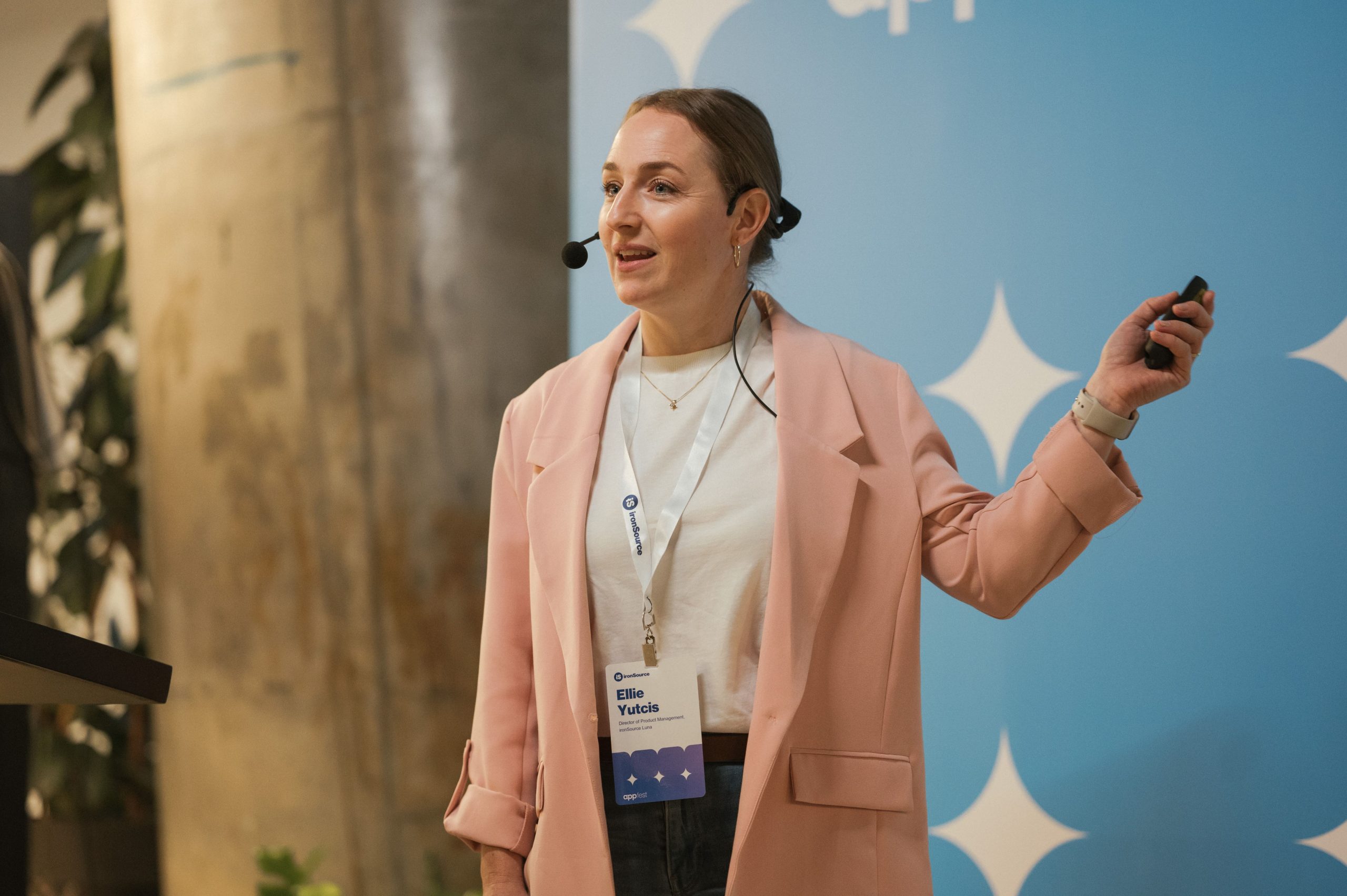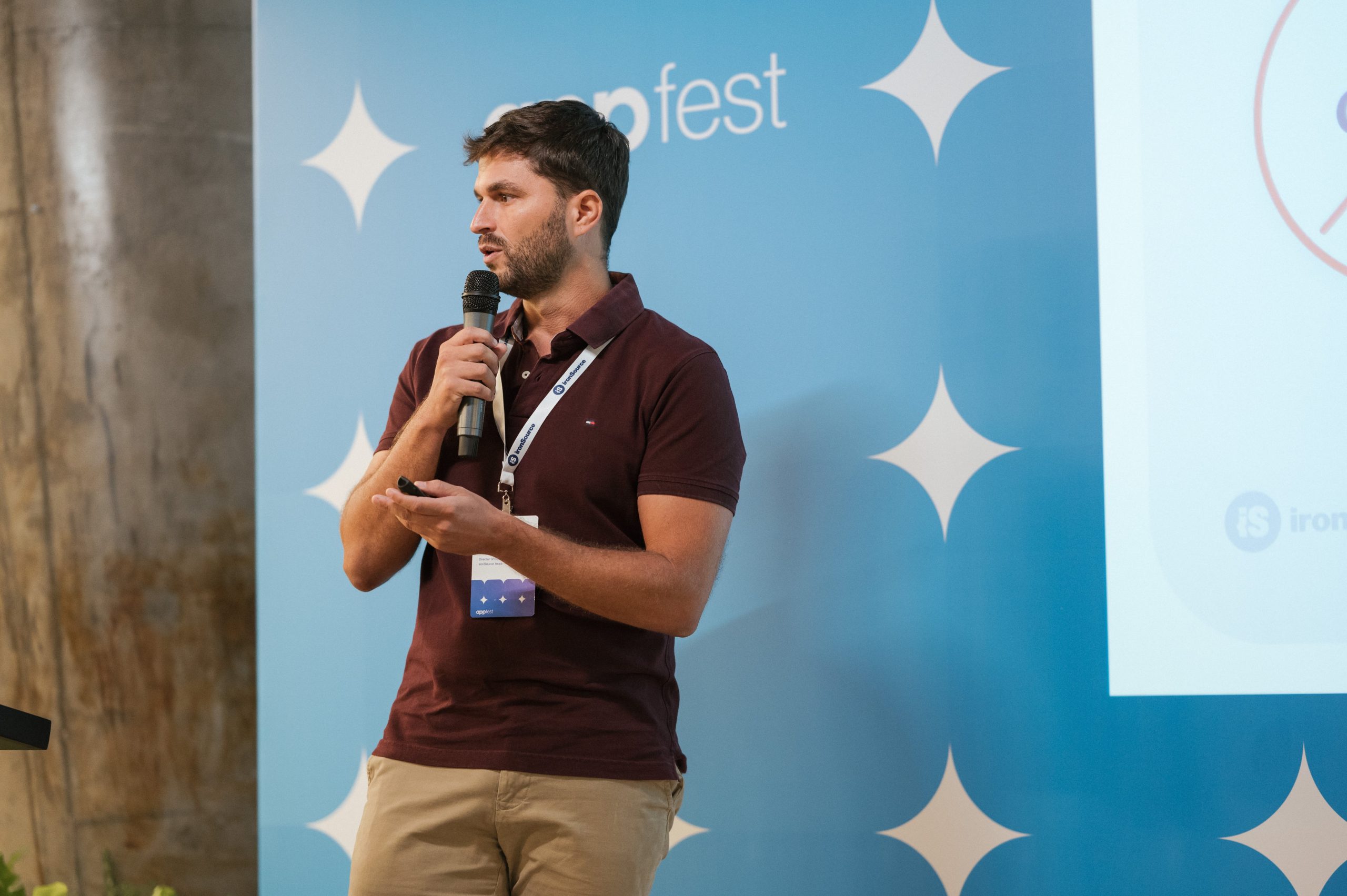Omer Kaplan, CRO, and co-founder of ironSource, spoke at Appfest 2022 on the philosophy behind ironSource’s innovations. He introduced us to some of the leaders using that philosophy to build the next generation of ironSource products: Nimrod Zuta, Ellie Yutcis, and Gal Fisheloviz - the SVP of Product at ironSource, Director of Product at ironSource Luna, and the Director of Business Strategy at ironSource Astra respectively.
Tune into the video recordings or read the summaries below.
ironSource’s innovation philosophy
The core philosophy that runs through all ironSource innovations is built on a full platform approach, constituted by three key pillars. As Omer explained, these three pillars enable ironSource to create products that truly help customers and push the industry forward as a whole:
- Deep understanding of the customer’s pain points
- Culture of experimentation with strong execution
- Anticipating the market

It's this philosophy that enables ironSource’s next generation of innovative products that Nimrod, Ellie, and Gal then introduced us to.
Marketability testing and LevelPlay’s cross-promotion
Nimrod began with the central idea behind LevelPlay - helping you grow. To do that, it’s necessary to understand what are the pain points of UA, from launch to scaling, and how they can be eliminated. Nimrod presented two innovative products to that end: marketability testing on SDK networks and LevelPlay’s cross-promotion tool.
There’s a familiar roadmap to launching - begin with prototyping, then test marketability on social networks, build up in-game metrics, soft launch, and finally attempt to scale. But, this roadmap has a pothole that can often make an app fail to reach its final destination - the uncertainty that comes from marketability testing exclusively on social networks, resulting in a blindspot in SDK network performance.
Marketability testing on SDK networks is a solution to help developers quickly and more accurately learn which concepts are worth launching. Using LevelPlay marketability testing on SDK networks enables you to see how your concept will perform on the wider audience you’ll be depending on once you’re ready to scale.

The second innovation, LevelPlay cross promotion, was built to help developers grow by tapping into their already acquired portfolio of users. Until now, developers relied on native ad placements and ad networks to do this. But each has its pain points: native placements have low engagement and offer limited performance optimization, while cross promotion through ad networks is costly and has you competing for your own instances.
Nimrod explained that LevelPlay’s cross promotion solves for these challenges by operating as a developer’s own private bidding network. LevelPlay’s solution works like any other bidding network - it offers CPI bids and only buys impressions if they provide the highest eCPM. On top of that, LevelPlay’s cross promotion has full data transparency (since it's your data), meaning the network can be optimized for ROAS. The solution gives you all the efficiency of ad network cross promotion with none of the risk to your monetization.
Luna for Apple Search Ads
Ellie provided a view into the latest solution Luna’s been working on: Luna for Apple Search Ads. Ellie showed that 65% of downloads happen after a search and 60% of users who tap on an ad will install. Clearly, the Apple Search Ads channel is worth scaling up on - which is why Luna created a solution to help advertisers do just that.
Ellie illustrated four missed opportunities that advertisers often experience when scaling on Apple Search Ads, and how Luna’s solution has been created to help avoid and overcome them.

Missed opportunity #1: You used fragmented data
Coming out on top requires a good understanding of how and what you are doing. To help advertisers get a clearer view of their own performance, Luna’s platform unifies your channel, internal BI, MMP, and marketing intelligence data - giving you one dashboard for your full-funnel view. From there you can better optimize your bids and access the metrics that matter to you, helping you beat out the competition.
Missed opportunity #2: You bid on the wrong keyword
Missing out on the right keywords means missing out on high-quality users. To help you improve keyword discovery, Luna teamed up with Sensor Tower to combine their keyword intelligence with Luna’s optimization and campaign management platform, creating a one-stop shop for your keyword discovery and bidding. Now, you can easily add and see the status of keywords from inside your campaigns. You’ll know which keywords you’ve bid on, what your impression share is, your keyword volume, and how much you’ve spent - all in your campaigns.
Missed opportunity #3: The user journey was broken
In Apple Search Ads search results campaigns, the relationship between product page and keywords is essential in keeping the user’s journey to your app intact. If a user taps on your ad creative to only see your product page is unrelated to their search, they’ll leave. That’s why creating ad variations based on custom product pages is so important - that way the custom product page can better match the theme or audience of the keyword. Luna provides data that helps you create a seamless user journey from each keyword to each custom product page. By merging creative insights and the full keyword funnel, Luna’s insights for custom product pages mean that you can easily optimize toward scale and performance.
Missed opportunity #4: You over or underspent
Inaccurately estimating how much to bid can lead to you missing an opportunity even once a user is acquired. If too much is spent acquiring a user, and that overestimate is compounded across thousands of users, it can have a detrimental impact on your ROAS. On the other hand, if too little is spent, then you fail to acquire those users to begin with. Luna’s Optimization Center was built to solve this problem, algorithmically supplying you with a bid price that your campaigns need to scale. With Luna’s Optimization Center you stay in control - let the center run on autopilot or manually review each recommendation.
Play & Own and ironSource Astra
The innovations discussed at Appfest so far have related to the current state of the App Economy - Gal now turned the session’s attention to the future with a window into ironSource’s innovations for web3. Gal introduced Play & Own (P&O) - what ironSource sees as the next step in the evolution of free-to-play gaming.
P&O separates itself from play-to-earn by emphasizing the value of ownership to users and the fun of the games, not just what can be earned by them. In the P&O model, users can really own the game items they collect, receive, or purchase. These assets could be used in-game for personalization, power-ups, progress, or just as collectibles. Outside of the game, they can also provide value - giving users access to VIP areas and benefits within other games.
According to Gal, there are 4 reasons why the P&O model is good for business:
#1 Increased revenue from IAP
A huge plus that P&O offers developers is increased IAP. It’s well-cited that only 2 -3% of users make in-app purchases. Users are wary of what they’re getting for their money, seeing IAP as a sunk cost related to a hobby. But, P&O changes this relationship. With the P&O model, users don’t sink money into a hobby but gain an asset with value. This transformation of IAP from expense to asset results in more revenue for developers.
#2 Royalties mean new revenue streams
Nike made $185M from hoodie and sneaker NFT sales in the last year, 50% of which was generated from royalties. These royalties are a huge additional revenue stream, offering developers a new way to monetize their games. In P&O, royalties are charged on the movement of an asset through the secondary markets - for every trade, developers can attach and set a royalty to the change of ownership. In this way, the ownership baked into P&O and web3 can be leveraged by developers to utilize this new revenue stream.

#3 Mutual value increases retention and engagement
In P&O, both users and developers share in the value. Users get ownership of the assets they love and play with, and developers get new ways to monetize and grow their games. This mutual value in P&O creates more engaged users, which in turn creates more engaged communities. For developers, this means users who are likely to stay longer and play more. Ownership brings emotional investment, emotional investment creates stronger communities, and stronger communities support better retention.
#4 Interoperability creates new avenues for UA
The openness and interoperability of web3 and by extension P&O can have a significant impact on UA. One element of this is the ability to leverage assets from a similar game with a relevant audience into a developer’s own - allowing them to take assets to entice users to theirs. Another element is the transparency of users’ wallets, enabling developers to more accurately tailor their UA efforts towards users that have played games similar to theirs.
To help developers navigate, integrate, and best use this next generation of gaming technology, Gal announced the launch of ironSource Astra - an all-in-one solution for the web3 gametech stack.
ironSource Astra’s stack
The ironSource Astra innovation offers unique elements for the easy integration of user ownership: plug-and-play easy integration, flexible support for multiple infrastructures, and a mobile-first integration from web2 to web3.
Astra Platform
Astra’s platform provides a place where developers can generate and manage their NFTs using a no-code easy-to-use interface. Developers can use the platform to distribute their NFTs to users in and outside of their games, giving them access to powerful UA tools. The Astra SDK lets developers bring their in-game assets to life and get important data on their users’ experiences by enabling them to analyze performance metrics like revenue and active wallets.
Astra Wallet
The focus when creating Astra’s wallet was put on ease of use and immersion - it's designed to be user-friendly with easy log-in and to work across platforms. Users will be able to access their wallet and game with the same log-in and can do so in-game, in the native app, or on the web.
A wallet is an essential tool to access NFTs and take action on web3 platforms, so being user-friendly is a top priority.
Astra Marketplace
Astra’s marketplace was constructed to easily facilitate trades for maximum conversion while not intruding in the users’ gameplay experience. Users’ immersion was paramount, so the marketplace was built with a custom design function, enabling the marketplace to fit the look and feel of the game being played.
Check out the full presentation here.
